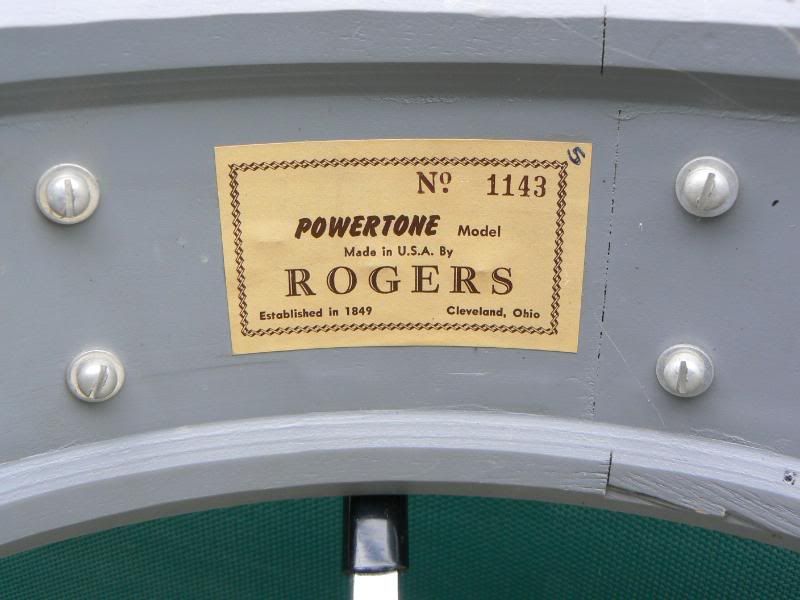Rogers Dynasonic Serial Numbers
This section does not any. Unsourced material may be challenged.
( January 2018) () The Rogers company was started in 1849 by an immigrant from named Joseph Rogers. Rogers came to the United States and started crafting drum heads. His son began making drums in the mid-1930s at a location. The first Rogers drums were assembled from shells and hardware of other manufacturers, but mounted with Rogers heads. In 1953, Joseph Rogers' grandson, Cleveland, who had no heirs, sold the Rogers drum company to Henry Grossman. Grossman moved the company to Covington, Ohio, and under his leadership Rogers was propelled to the forefront of American drum making for the next decade and a half.
Just get this software for free from the below download link.AutoCAD 2007 download, AutoCAD 2007 with crack, patch, keygen free download, free download AutoCAD 2007 full version, AutoCAD 2007 direct. Autodesk AutoCAD 2017 32 Bit 64 Bit ISO Free Download Latest Version for Windows. Picktorrent: autocad 2007 software 64 bit with crack - Free Search and Download Torrents at search engine. Download Music, TV Shows, Movies, Anime, Software and more. Autocad 2007 software 64 bit with crack - Search and Download.  Autocad 2007 Cracked Free Download Full Version For 32-Bit and 64-Bit With Autocad 2007 Crack software, you can view, update, write, organize, design and also share CAD sketches anytime, everywhere. Autocad 2007 Available for Mac, Windows, Android, iOS phones and tablets. AutoCad 2007 Torrent. Bittorrent 729.64 MB. Autocad 2007 Crack Aekay. AutoCad 2007 Download free torrent at Largest Bittorrent Source with Several Listed Files.
Autocad 2007 Cracked Free Download Full Version For 32-Bit and 64-Bit With Autocad 2007 Crack software, you can view, update, write, organize, design and also share CAD sketches anytime, everywhere. Autocad 2007 Available for Mac, Windows, Android, iOS phones and tablets. AutoCad 2007 Torrent. Bittorrent 729.64 MB. Autocad 2007 Crack Aekay. AutoCad 2007 Download free torrent at Largest Bittorrent Source with Several Listed Files.
1964 Rogers Dynasonic Chrome Over Brass '7 Line' Snare Drum, 14' x 5'. Be the first to rate this. Oval badge with serial number # 4987 from 1964. Rogers difference between the big 'R' and the script logos. I am quite keen to get a rogers snare (like a dynasonic), but I really like to know as much as I can before spending the money so what is the difference between the big 'R' and the script logos on these? Multivac r 7000 manual.
Design engineer Joe Thompson and marketing guru Ben Strauss were instrumental in Rogers' success during its golden age from the mid-1950s to the late 1960s. The company's drums were embraced by musicians from the movement to the classic rockers of the 1960s and 1970s. However, the manufacturer was most closely associated with the ' and swing drummers of the 1940s and 1950s. Rogers is probably most famous for its 'Dyna-Sonic' snare drum, which featured a number of innovations. In particular was a unique cradle in which the snare wires were supported. This device provided a means by which the longitudinal tension of the snare wires could be adjusted independently of the vertical force holding the snares against the bottom head.
As a result, the snares could be tensioned as tightly as the drummer wanted without having to pull the snares against the head so hard they constrained (choked) the head's vibration. This and other innovations (for example, a remarkably shallow—4/1000'—snare bed) made possible by the novel tensioning arrangement gave the drum a relatively crisp and recognizably clear sound. Dyna-Sonics were made from about 1961 until the mid-80's.

The company was bought in 1966 by, which had also acquired in 1965. The vast majority of Dyna-Sonics had COB (chrome over brass) shells. Only a small number of wood-shell Dyna-Sonics was made during the lifetime of the drum. Pristine models can fetch thousands of dollars on the vintage drum market. Other notable Rogers drums were the Powertone model of snare drums and the Holiday model of tom-toms and bass drums. Were also manufactured for a time, the model being called Accu-Sonic. In addition to its Dyna-Sonic snare drum, Rogers was renowned for its highly-innovative hardware.
Much of it was developed by Thompson, including the Swiv-o-Matic line of bass drum pedals, hi-hats, cymbal stands, and tom-tom holders. The cymbal stands and tom-tom holders featured a ball-and-socket tilting mechanism. Even drummers like of, of, and of used some Swiv-o-Matic hardware items on their kits. Used a single Swiv-o-Matic tom holder on his large and drum kits through the mid-1980s in order to position a tom-tom directly over the center of one of his bass drums. From 1964 until 1975, Rogers shells were 5-ply construction of alternating plies of maple and birch wood with reinforcement rings.
From late 1975 until 1978 the shells were made up of 5 alternating plies of maple and birch wood with reinforcement rings. Starting in 1978, Rogers began offering drums with 8-ply shells without reinforcement rings (made by Keller Products, Inc. Of Manchester, NH) for its XP-8 line.

They marked the beginning of relatively heavy, thick 'stadium' shells that favored attack and projection over midrange tonality. These drums were promoted as 'the best Rogers drums ever made' and the XP-8 models lived up to that claim. 1976 saw the introduction of 'Memriloc' hardware. This innovation was co-developed by Dave Donoho and Roy Burns. It was the first of the super-stable hardware systems and was subsequently copied by most major drum manufacturers in one form or another. Most modern drum hardware evolved from the Rogers Memrilock concept.